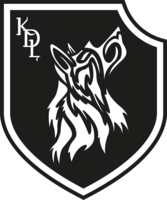Birth
Yes, it’s the time of births, our little wolves arrive to discover the day, like a beautiful and grand image.
In the wolf, gestation lasts 63 days on average, so the period of births is around late April, early May. A week before the arrival of the pups, the pregnant wolf plucks the hair from her belly and lines her den with it. This exposes her teats for nursing.
During labor
The wolf lies on her side in the den and presses her hindquarters and back against the den’s wall during uterine contractions. The behavior of the pack changes, becoming more placid and cautious, moving slower. They stay away from the den defended by the alpha male, who also avoids getting too close, risking aggressive rejection by the female. A litter typically consists of two to eight pups (average of 6).
After birth
The wolf stays in the den to care for her pups for 6 to 8 weeks, during which she is fed by other pack members (especially the alpha male) through regurgitation. During the first two weeks, she practices intense and frequent anal and abdominal massages on her pups, stimulating elimination of waste. She absorbs the excrement to keep the den clean. In the first three weeks, she keeps her pups away from other pack members and sometimes even the father. In danger, she can transport the pups to another den. The pups weigh between 300 and 500g at birth, blind, deaf, and with limited motor skills. At two weeks, their eyes open, but their vision is not functional for a few more weeks. They start to eat small pieces of regurgitated meat and explore their surroundings. At three weeks, they begin to leave the den to play near the entrance under the watchful eye of their mother or another pack member when she goes hunting.
Adult fur starts growing around the nose and eyes after a month. The body takes on adult conformation, with feet and a head growing disproportionately. High-pitched cries gain strength. Dominance and play fights begin.
Wild wolves usually reject weak or sickly pups, which mothers may kill. Infanticide appears to be a natural, non-pathological behavior. Young wolf mortality is high; 50% of pups die during the first three months of life, and 60% before the age of one year. Survival after the first winter depends on prey availability.
Considering that wolves reproduce only once a year, it is essential to preserve this species, just as they try to protect ours, which is overpopulated.
If the intelligence of the origin of numbers is a virtue, wolves shine with it!
Artificial intelligence translation of an original text by Sandrine Devienne.
Click here to read the French version

